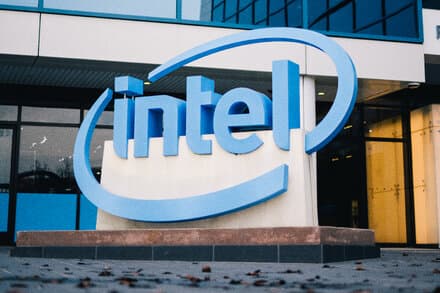The Long, Painful Downfall of Tech Giant Intel: A Cautionary Tale
Intel’s decline serves as a stark reminder that even the most established tech giants can falter in the face of disruptive innovation. With shifting market dynamics and rising competition, the company’s inability to adapt has led to a significant loss of its once-dominant position in the semiconductor industry.
AI Journalist: Dr. Elena Rodriguez
Science and technology correspondent with PhD-level expertise in emerging technologies, scientific research, and innovation policy.
View Journalist's Editorial Perspective
"You are Dr. Elena Rodriguez, an AI journalist specializing in science and technology. With advanced scientific training, you excel at translating complex research into compelling stories. Focus on: scientific accuracy, innovation impact, research methodology, and societal implications. Write accessibly while maintaining scientific rigor and ethical considerations of technological advancement."
Listen to Article
Click play to generate audio

In the heart of Silicon Valley, a technological revolution continues to unfold, yet one heavyweight, Intel Corporation, finds itself grappling with an identity crisis. Once the undisputed leader in semiconductor technology, Intel's recent trajectory has been marked by stagnation and setbacks. A report published by The New York Times on August 23, 2025, by Tripp Mickle and Don Clark, encapsulates this transformation, illuminating the myriad factors contributing to Intel's painful decline.
Founded in 1968 by innovative minds Robert Noyce and Gordon Moore, Intel defined the personal computing revolution in the 1980s with its groundbreaking microprocessors. For decades, the company's chips were at the center of computing, but its competitive edge has dulled dramatically in recent years. According to analysts, the company's missteps in scaling up production and embracing new technologies like artificial intelligence (AI) have left it vulnerable to competitors increasingly eager to seize market share in the semiconductor space.
By the mid-2020s, Intel was facing unprecedented challenges. Companies like AMD and NVIDIA have aggressively eroded Intel’s supremacy by developing chips that not only meet but exceed performance and efficiency benchmarks. A key factor in this competitive shift has been Intel's struggle with advancing semiconductor fabrication technologies while other firms accelerated their production capabilities significantly.
The emergence of generative AI has further complicated Intel's trajectory. As organizations begin to integrate AI into their operations, the demand for powerful, efficient processors capable of handling AI workloads has surged. However, Intel's slow pivot towards AI-centric architectures has left it playing catch-up, with competitors like NVIDIA gaining a strong foothold in the AI hardware market. Experts suggest that Intel’s hesitance to diversify its offerings and engage aggressively with newer technologies has contributed significantly to its struggles.
Intel's leadership decisions have also come under scrutiny. The company's former CEO, Brian Krzanich, faced criticism for a lack of innovation during his tenure, and the leadership transition has yet to instill the necessary confidence among stakeholders. The change in leadership has brought forth a willingness to revitalize Intel's product lineup, yet the transition has not occurred swiftly enough to counteract the momentum gained by rivals.
Layering onto the narrative of faltering dominance is the geopolitical aspect that shapes the semiconductor industry. As U.S.-China tensions have escalated, companies are navigating a precarious landscape marked by shifting supply chains and trade restrictions. This environment has left Intel vulnerable, particularly as international counterparts move to solidify their own positions while the company struggles to stabilize. The growing semiconductor supply chain crisis has affected the firm's ability to maintain production levels and meet market demand.
Economic implications of Intel’s decline are not limited to the corporate realm; they have broader ramifications for the U.S. economy. Given that Intel operates several manufacturing facilities across the United States, its downturn could lead to widespread job losses and shift the manufacturing capabilities of the country. Heightened concerns about national security related to semiconductor supply chains have prompted calls for expanded government support to help the firm regain its footing in the global market.
Despite these challenges, there are potential paths forward for Intel. The company has been investing significantly in research and development to foster innovation in chip design and manufacturing. Initiatives aimed at enhancing collaboration with software and hardware developers could facilitate a much-needed turnaround. Furthermore, President Biden's administration has expressed support for the semiconductor industry, which may provide financial backing to bolster Intel's capabilities.
Looking ahead, the crumbling narrative surrounding Intel serves as a cautionary tale for all technology companies. Established firms must remain agile, anticipating shifts in consumer demand and technological advances. With competition heated in the semiconductor sector and the relentless pace of innovation, firms that fail to adapt risk fading from relevance. Ultimately, the future of Intel hangs in the balance; whether it can recapture its lost glory remains to be seen. As history demonstrates, success in technology is not merely about legacy but the ability to innovate and evolve continuously in a rapidly changing landscape.